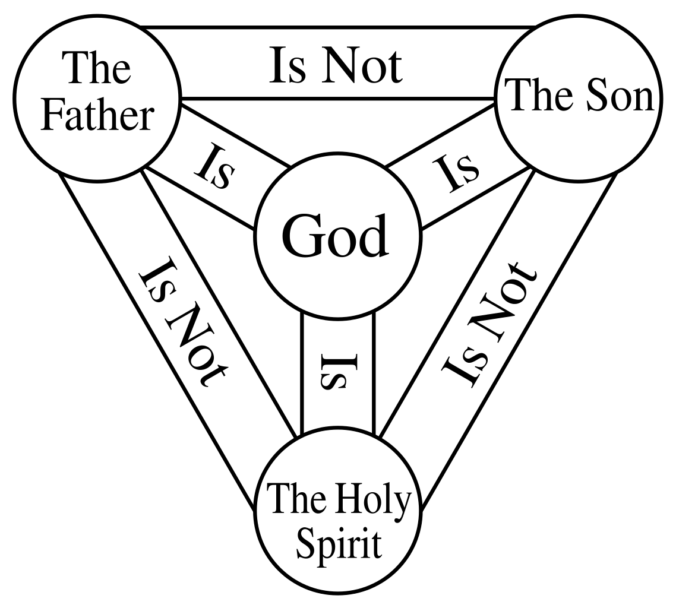Last weekend, I had the opportunity to attend a conference on the Trinity at Knox Reformed Presbyterian Church in Richmond, Virginia. Speakers included Mr. Anthony Rogers, Dr. Edward Dalcour, and Dr. James White, host of the popular webcast The Dividing Line and accomplished debater on numerous topics including atheism, Islam, Mormonism, and liberal theology. Recorded lectures may all be found here, but I wanted to give a recap of one of the most important lectures, which was Mr. Rogers’ discussion of the Trinity in the Old Testament. He provided numerous examples, showing how all three members of the Trinity are active in the Old Testament, not just God the Father.
The first example is from Exodus where God says to Moses, “Come up to the LORD, you and Aaron, Nadab, and Abihu, and seventy of the elders of Israel, and worship from afar” (Exodus 24:1 ESV). Did you catch it? God is saying to come up to God, almost as if he’s speaking of himself in the third person. The only way to really make sense of this verse is to conclude that there is more than one Person of the Trinity who is active in this account, someone who will act as the messenger of God while Moses is on the mountain.
There are also various allusions to multiple Persons in the Godhead in Isaiah 63:7-19. In verses 10 and 14, the Holy Spirit is referred to by name. There we read, “But they rebelled and grieved his Holy Spirit” (v. 10a) and “Like livestock that go down into the valley, the Spirit of the LORD gave them rest” (v. 14a).
In verse 9, God refers to “the angel of his presence”, the identity of which deserves some attention.1 We also see this angel speak to Israel in Judges, where he tells them, “I brought you up from Egypt and brought you into the land that I swore to give to your fathers” (Judges 2:1 ESV). Finally, in Genesis 16:13, Hagar worships the angel of the Lord as God, worship which the angel does not reject. This is also the same Person that Moses went up to in Exodus 24.
This angel, or messenger, is not an angel such as Gabriel. This is the Second Person of the Trinity appearing to men before his Incarnation. Thus, God the Son is appearing to men in the Old Testament, as well as the New, to Moses on Mount Sinai, to Israel throughout their history, and Hagar. He even appears to Isaiah in his vision of God in chapter 6. Although less immediately clear in Isaiah, John writes in his Gospel, “Isaiah said these things because he saw his glory and spoke of him” (John 12:41 ESV). God the Son has always been the Word of God. He has not merely spoken to his people in the Incarnation, he has been bringing God’s messages to his people throughout redemptive history.
Although the Trinity is fully revealed in the New Testament through the Incarnation of Jesus and the outpouring of the Spirit at Pentecost, the fact that God has been at work throughout all of Scripture means that the Trinity has been at work throughout all of Scripture. Thus, we should be reading even the Old Testament with a Trinitarian lense. God the Son and God the Spirit weren’t waiting on the sidelines until the New Testament era. They were both at work accomplishing the united will of the Triune God in history. Such a fact should cause us to give praise to our Triune God, who has demonstrated his love for us throughout the Bible.

